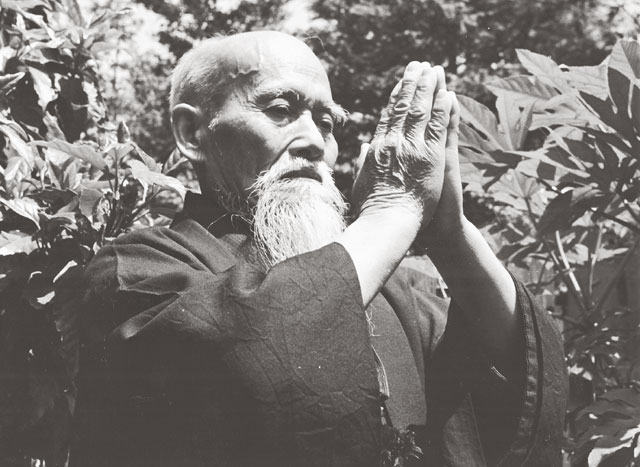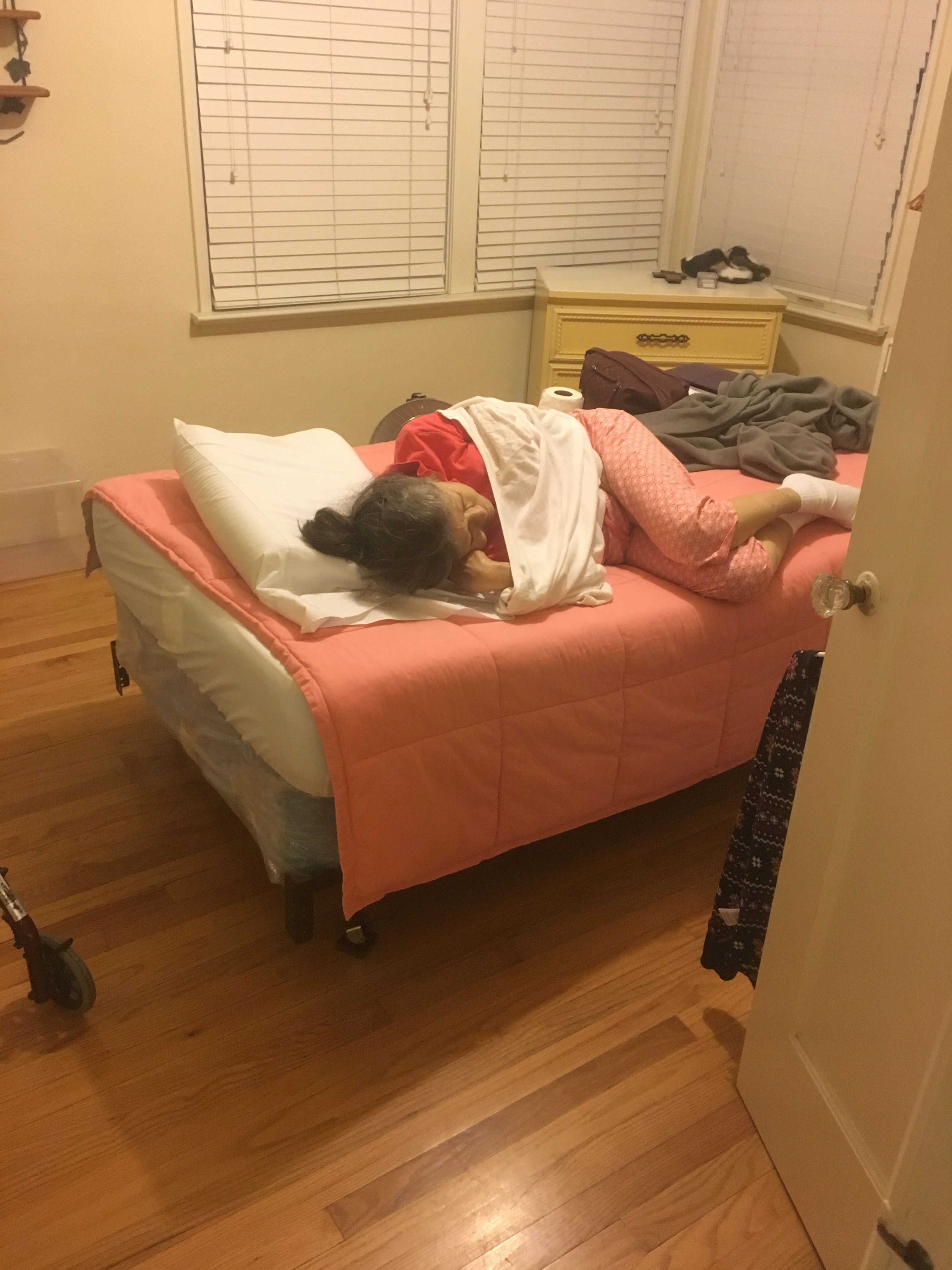
A few months ago, in August, when visiting my extended family in Bakersfield, CA, to my surprise, two of my older cousins asked me to show them some self-defense techniques. I have been practicing Aikido for many years, but they have never asked me to do that before when visiting. The difference is I recently earned a black belt. Being a black belt confers considerable respect it seems.
I indulged my cousins by showing them a few techniques. They especially liked a deflection I showed them off a punch. When Aikido techniques are done proficiently, the force or energy of the “attacker” gets redirected and there is a moment the attacker is off balance and vulnerable. My cousins thought my deflection from a punch was “way cool.”
While Aikido can be used for self-defense, experienced Aikidoka (i.e. Aikido practitioners) know it is more useful than that. Aikido can, also, be used in everyday life. For me, what I went through in trying to support and get help for my gravely disabled mother felt like a marathon version of what we call “randori” in our training.
Randori consists of multiple attackers (the “ukes”) going after one person (the “nage”). The goal of the nage is to avoid being stopped or taken down. The stress and chaos one can experience as nage can be intense. I have trained at some dojos where ukes are expected to run full speed and tackle the nage.
Randori is the most challenging part of Aikido training. Some would say it is “the essence of the training”, as it requires proficiency in many areas of Aikido to be successful. For even a highly skilled black belt, dealing with multiple ukes, typically three or four, constantly attacking gets tiring, physically and mentally. Indeed, seeing my mom’s physical and mental health worsen over the course of many years felt like a pummeling. Some key events will make the point:
- In 2007, my mom starts having auditory hallucinations and, at times, exclaims to me and other family members that people are inside her apartment and trying to kill her.
- In 2010, my mom becomes homeless, living in her car, due to not being able to find a rental because of past evictions.
- In 2012, my mom falls in a bathtub and fractures her back. Shortly before that, she fell down on a staircase, saying “evil spirits” pushed her down.
- In 2014, my mom’s physical health begins to greatly deteriorate, due to her medical self-neglect. Regular hospitalizations would begin to occur.
- In 2015, the week of Christmas, my mom would be medically neglected and abused by a hospital in Kern County. Against my wishes, my mom was unsafely discharged, though she was in an acute psychotic state and could not even walk.
- I moved my mom in with me in 2016 and would leave my teaching job to be her full-time caregiver. That summer, we would find out my mom had kidney disease and her kidneys were functioning at just 30%.
To be successful in randori, a nage must effectively keep their balance, maintain proper posture, and stay calm and relaxed. Seeing my mom suffer and being pretty powerless to help her, despite my best efforts, taught me the importance of being able to do these things in real life.
Keeping Balance and Maintaining Proper Posture

In randori, a nage must move decisively and efficiently in dealing with multiple attackers. A stumble or just being knocked off balance can lead to a nage being taken down. One just need think of how important balance must have been for an ancient samurai on a battlefield. Against many enemy samurai, if a samurai lost his balance in battle, his diminished ability to move or respond could prove fatal.
Proper posture means proper alignment and finding and maintaining balance is virtually impossible without it. To help students visualize and feel proper posture, my Sensei likes to say “imagine a vertical line going straight up and down through one’s center, perineum and head.” Another Sensei tells us to “expand our chest and shoulders and drop our tail bones” to find proper posture.
Maintaining balance and proper posture allow nage to perform technique more effectively, since uke’s energy is redirected and shaped by nage. Proper balance and posture, also, allow nage to better see the “lay of the land”, which opens up the choices available to him or her, essentially.
Stay Calm and Relaxed
Aikido is sometimes called “meditation in motion” and for me, that is certainly true. I discovered at the beginning of my training, back in 2009, that I needed to relax my shoulders in order to let “ki” (i.e. energy) an uke was giving me to flow more freely through and around me. Tension or “muscling up” blocks the energy and can even make it easier for an uke to resist and/or use more force against a nage.
If an uke is stronger than the nage, then the nage is obviously going to be at a huge disadvantage if a physical struggle ensues. And regardless of physical differences, in a randori, any moment of struggle between nage and an uke allows the other ukes to get closer and strike or grab the nage. “Freedom of movement” through relaxation is integral for success in randori.

Staying calm and relaxed helps nage be more “present” or “mindful” also. When present, a nage is able to be more attentive and sensitive to his or her surroundings. Indeed, in such a state, the senses are keen and the emotions and even intentions of others are more discernible. From a research paper on “mindfulness”, “The concept of mindfulness….[involves] a highly receptive, nonjudgemental awareness of and attention to whatever is present in the moment – whether pleasant, unpleasant or neutral.”
In terms of execution, a mindful nage is able to make better decisions and act more appropriately, based on the circumstances. Frankly, sometimes the correct response to an uke’s attack can be “soft” and other times it can be “hard.” The nage needs to be able to respond with each and, also, discern when each is appropriate.
Aikido in The Real World
I am pretty proud of my aikido in everyday life today, but there have been numerous times when I have been overwhelmed and distraught in the past. Nobody will be surprised to learn that I ended up hitting some very rough patches, or low points, particularly when my mom was homeless for two years living in her car
Between 2007, when I first started trying to get help for my mom, and 2012, when my mom was in her second year of being homeless, I consumed too much alcohol, had trouble sleeping, had bouts of high blood pressure and started experiencing panic attacks. The stress and worry were too much for me. My doctor would eventually recommend taking an anti-depressant. I vividly remember taking the medication for the first time. As I looked at the pill in the palm of my hand, I thought “I can’t believe I’m taking a psychiatric drug before my mom is.”
–To be continued–


